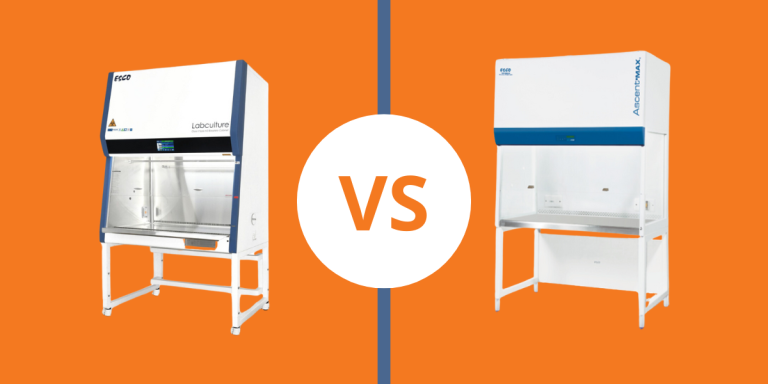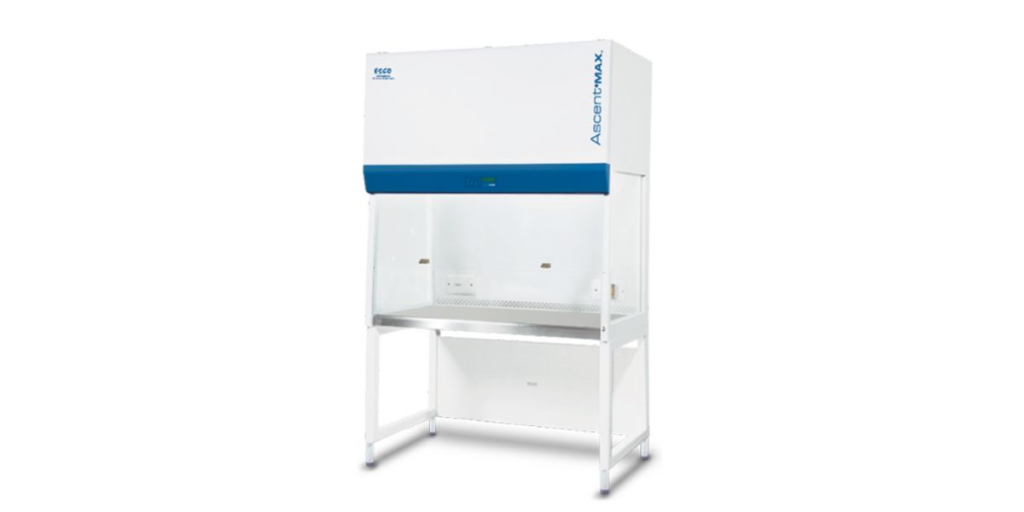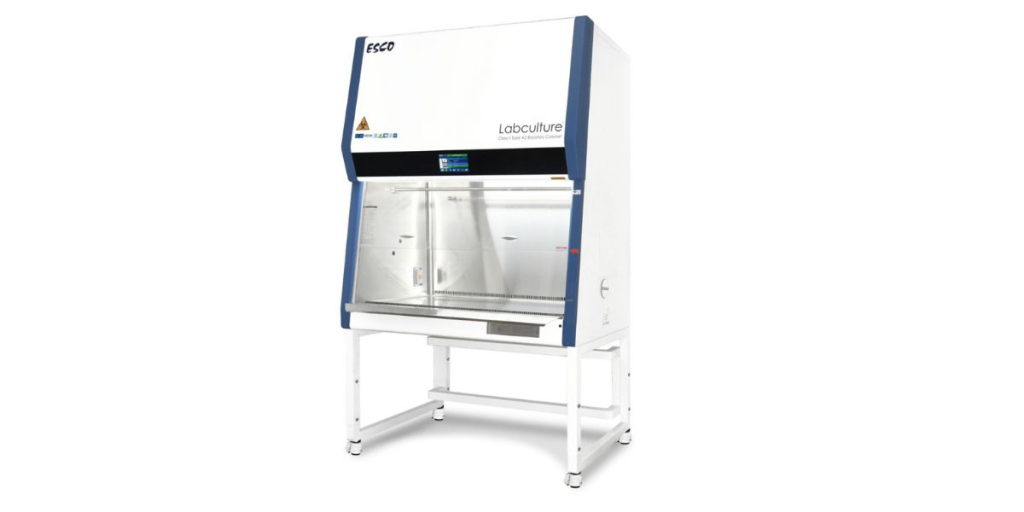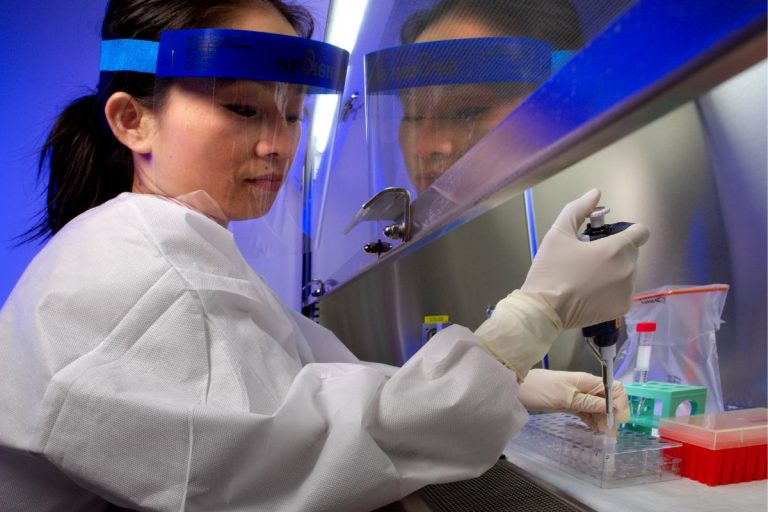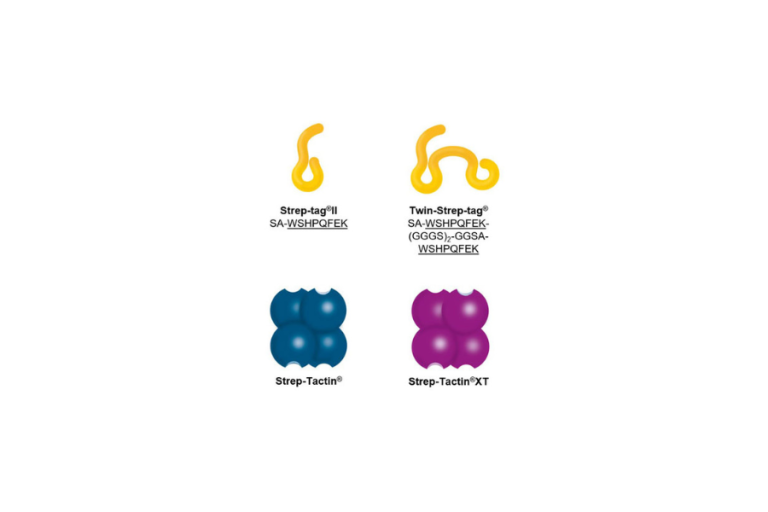Laboratory environments rely heavily on various specialised lab equipment. Fume hoods and biosafety cabinets are two enclosure types of laboratory biosafety equipment used to protect people and samples from common laboratory hazards. This category of lab equipment is often referred to as “hoods”. In simple terms, fume hoods are designed to protect lab workers, while biosafety cabinets are a type of hood typically designed to protect samples, laboratory personnel, and the working environment.
When setting up a laboratory, it’s vital to choose the right kind of hood enclosure for your needs. Each type of hood is built to handle particular hazards, materials, and applications. They’re designed with different protection measures and airflow patterns, and they’re set up to handle different types of laboratory risks.
At FB Australia, we supply both hoods to laboratories across Australia. Therefore, in this article, we’ll help you compare and contrast fume hoods and biosafety cabinets.
What are fume hoods used for?
Pictured here is Esco Lifesciences’ Ascent® Ductless Fume Hood.
Fume hoods are ventilated enclosures designed to remove hazardous chemical fumes, volatile vapours, and dust from the work area. This ventilation system draws air from the room into the hood, typically through a vertical sash or sliding panel. Inside the hood, the air flows over the work surface to capture hazardous vapours or particles. The captured air and contaminants are then either exhausted outside the building or filtered extensively to remove harmful substances before being recirculated or released into the room.
What are biosafety cabinets used for?
Pictured here is Esco Lifesciences’ Labculture G4 – Class II Biological Safety Cabinet.
Also known as a biological safety cabinet, a biosafety cabinet utilises HEPA filters to protect against hazardous particulates such as bacteria, viruses, and other pathogens. Depending on the design and classification, these cabinets may recirculate filtered air back to the laboratory environment or exhaust it outside. Different classes of biosafety cabinets provide varying levels of protection. Unlike fume hoods, which are designed primarily to remove chemical fumes and vapours, biosafety cabinets focus on containing biological hazards to protect both the user and the environment.
Laboratory applications: fume hoods vs. biosafety cabinets
Like much other specialised equipment, fume hoods and biosafety cabinets exist to handle different applications. Fume hoods are used primarily for handling hazardous chemicals, and biosafety cabinets are made for biological materials. The following applications are common with one or both types of equipment:
Chemical Laboratories
Fume hoods are used extensively in chemical laboratories, where researchers handle and manipulate volatile chemicals, acids, bases, and other hazardous substances. Biosafety cabinets are rarely used in chemical laboratories, being specifically designed for biological agents.
Pharmaceutical Research and Development
In pharmaceutical laboratories, fume hoods are used during the synthesis of new drugs. They help to handle potent compounds, prepare chemical formulations, and safeguard laboratory workers. During drug development, biosafety cabinets are used to handle biological agents and also to culture cells, tissues, and microorganisms.
Biological Laboratories
Fume hoods can be employed in biological laboratories, although biosafety cabinets are more common. If chemical fume containment is needed alongside biological containment, fume hoods are often used. Biosafety cabinets are ideal for handling genetically modified organisms (GMOs), recombinant DNA technologies, and other biohazardous materials.
Quality Control Laboratories
Fume hoods and biosafety cabinets are both utilised in quality control labs, within industries such as pharmaceuticals, food and beverage, and manufacturing. They help in the testing and analysis of raw materials, finished products, and environmental samples. Equipment is selected based on the use of chemicals or hazardous biological materials.
Educational Institutions
Fume hoods and biosafety cabinets are both found in educational laboratories, including universities and schools. They provide a controlled environment for learning while ensuring the safety of students and academics. Due to safety risks, biosafety cabinets are less likely to be found in a high school lab though some may contain fume hoods for experiments involving hazardous chemicals.
Industrial Applications
Fume hoods are widely used in industries that involve chemical processes, such as petrochemical refineries, chemical manufacturing plants, and semiconductor fabrication facilities. Biosafety cabinets also have select industrial applications, although their use is limited to handling biological agents or genetically modified organisms.
Design and construction: fume hoods vs biosafety cabinets
The design and construction of fume hoods differ considerably from biosafety cabinets. While both types of equipment are designed to protect laboratory personnel, they’re meant to deal with very different substances and use cases. The following differences are noteworthy when it comes to the design features:
Fume hoods
Fume hoods are designed to capture and exhaust contaminants away from the user. To do this properly, they need to be constructed with a sash (movable transparent panel) at the front for access and viewing. All construction materials must be resistant to chemicals, and a robust ventilation system is required to filter harmful substances.
Fume hoods also come in different types. For example, ducted fume hoods connect to an external ventilation system for efficient removal of contaminants, whilst, ductless fume hoods are equipped with filtration systems suitable for environments where external venting is impractical.
Biosafety cabinets
In contrast, biosafety cabinets are designed to protect materials and people from biohazardous materials. They are constructed with a sealed work area, often with UV lights and other specialised features for decontamination. Biosafety cabinets require advanced HEPA filters with sealed edges to sterilise and disinfect materials prior to release.
Biosafety cabinets also encompass three different classes (such as Class I, II, and III) that vary in the level of containment and protection they provide, each designed with specific airflow configurations and safety features suited to different biological hazard levels.
Standards and classifications: fume hoods vs biosafety cabinets
Fume hoods and biosafety cabinets are both designed to provide a sterile work environment. There are different classes of products available, providing varying levels of protection and control. Fume hood products follow various safety standards, including AS/NZS 2243.8:2014 – Safety in laboratories – Fume cupboards. This helps to ensure proper performance when containing and exhausting chemical fumes.
The three classes of biosafety cabinets adhere to AS 2252 series. There are three main classes of biosafety cabinets:
- In a Class I biosafety cabinet, air is drawn away from the laboratory worker and across the work surface. This provides protection to the operator but not to the product.
- In a Class II biosafety cabinet, air is drawn safely around the operator under the work surface. HEPA-filtered air flows downward onto the work surface, with exhaust air filtered before being recirculated or released.
- Class III biosafety cabinets are gas-tight enclosures. With this setup, both intake air and exhaust air pass through HEPA filters. These cabinets have an additional physical barrier between the operator and material.
Chat to the team at FB Australia for assistance with choosing the right hood for your needs!
Fume hoods and biosafety cabinets are two essential types of equipment used in laboratory environments. Fume hoods are designed primarily to protect lab personnel by removing hazardous chemicals, vapours, and dust from the work area. Biosafety cabinets have a wider focus, protecting laboratory samples, research workers, and the work environment. They’re also intended for different applications, using HEPA filters to protect against bacteria, viruses, and other hazardous biological pathogens. When setting up a laboratory, whatever equipment you choose, it’s vital to ensure appropriate levels of protection.
Since they both suit many different applications and come in different variants, it can be challenging identifying the right hood for your needs. That’s where the team at FB Australia can help! As a leading Australian Lab Supplier, we offer expert guidance in selecting the ideal fume hood or biosafety cabinet tailored to your specific laboratory requirements. Don’t hesitate to get in contact with our team to see how we can best assist you!
